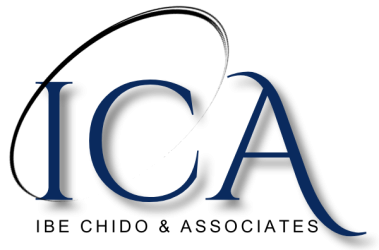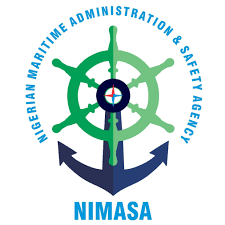Introduction
Nigeria is Africa’s largest maritime hub, handling over 70% of West Africa’s cargo traffic and generating billions of dollars annually from maritime trade. With this scale comes a critical need for safety and security oversight. The Nigerian Maritime Administration and Safety Agency (NIMASA) is the government agency mandated to regulate maritime safety, security, and pollution control in Nigerian waters.
If you’re a shipowner, shipping company, port/terminal operator, or a private security provider, obtaining a Maritime Safety and Security License from NIMASA is compulsory for lawful operations.
What is a Maritime Safety and Security License in Nigeria?
The phrase “Maritime Safety and Security License” is a general term used by operators. In reality, NIMASA issues various approvals, certificates, and registrations under the International Ship and Port Facility Security (ISPS) Code and other safety frameworks. These include:
-
Ship Security Plan (SSP) approval and ISPS Ship Security Certificate
-
Port Facility Security Assessment (PFSA) and Port Facility Security Plan (PFSP) approval
-
Registration of Recognised Security Organisations (RSOs)
-
Registration of Guard Force Companies
-
Authorisation of classification societies and document approvals (e.g., SOPEP, CLC)
So when stakeholders say “Maritime Safety and Security License,” they mean one or more of the above NIMASA approvals.
Who Issues the License?
The Nigerian Maritime Administration and Safety Agency (NIMASA) is the sole regulatory authority empowered to:
-
Enforce the ISPS Code in Nigeria
-
Issue and approve maritime safety/security licenses
-
Register and monitor RSOs and guard force companies
-
Inspect and certify ships and port facilities
-
Approve and verify security plans
Therefore, all applications must go through NIMASA’s ISPS Unit.
Categories of Maritime Safety and Security Approvals
To guide you better, here is how NIMASA categorises approvals:
-
For Shipowners & Shipping Companies
-
Ship Security Plan (SSP) approval
-
ISPS Ship Security Certificate issuance
-
-
For Port & Terminal Operators
-
Port Facility Security Assessment (PFSA) approval
-
Port Facility Security Plan (PFSP) approval
-
-
For Private Security Providers
-
Registration as a Recognised Security Organisation (RSO)
-
Registration as a Guard Force Company
-
Requirements for Obtaining a Maritime Safety and Security License
Here is a consolidated document checklist based on NIMASA’s published requirements:
Company/General Documents
-
Formal application letter (to Director, ISPS Unit, NIMASA)
-
Certificate of Incorporation (CAC)
-
Memorandum and Articles of Association (MEMART)
-
Company Profile (experience, scope of service, resources)
-
Current Tax Clearance Certificate
-
Proof of insurance (where applicable)
Personnel & Security Capability
-
Appointment letters of Company Security Officer (CSO), Ship Security Officer (SSO), or Port Facility Security Officer (PFSO)
-
Certificates of training/competence (must be NIMASA-approved courses)
-
List of security staff with credentials
Technical Documents
-
For Ships: Draft Ship Security Plan (SSP)
-
For Port Facilities: PFSA and PFSP reports
-
For RSOs/Guard Companies: Manuals, SOPs, contracts, and evidence of previous projects
Other
-
Completed NIMASA application forms (download from ISPS section of NIMASA website)
-
Proof of payment of applicable tariffs
Step-by-Step Procedure
Here is the exact process depending on your category:
A. For Shipowners/Shipping Companies
-
Confirm ISPS applicability to your vessel
-
Prepare SSP (with or without an RSO)
-
Submit application + documents to NIMASA ISPS Unit
-
Pay fees (application, inspection, processing – tonnage-based)
-
NIMASA conducts inspection/verification
-
If compliant, NIMASA issues ISPS Certificate
B. For Port/Terminal Operators
-
Conduct a PFSA
-
Prepare PFSP addressing identified risks
-
Submit PFSA + PFSP to NIMASA ISPS Unit
-
Pay fees
-
NIMASA reviews and inspects facility
-
Approval granted if compliant
C. For RSOs & Guard Force Companies
-
Prepare company documents + security staff credentials
-
Submit application package to NIMASA ISPS Unit
-
Pay registration fees
-
NIMASA vets credentials and conducts due diligence
-
If compliant, RSO/Guard Force registration certificate issued
Costs & Fees: NIMASA Tariff (Official Rates)
Below is a simplified table from the NIMASA tariff schedule:
| Item | Fee (₦) | Notes |
|---|---|---|
| SSP Application Fee | 100,000 | One-time per plan |
| SSP Inspection Fee | 250,000 | Payable before inspection |
| SSP Processing Fee (501–1,000 GT vessel) | 500,000 | Tonnage-based; up to several million for larger vessels |
| SOPEP/SMPEP Approval | 850,000 | For tankers greater than150 GT |
| CLC Certificate | 180,000–300,000 | Annual, tonnage-based |
| Authorisation of Classification Societies | 150,000–250,000 | Multi-year |
Fees differ based on tonnage band, document type, and license category.
Timelines & Processing Duration
According to NIMASA’s published service charter:
-
Simple approvals (document verification, small vessel) — 2–4 weeks
-
Complex approvals (PFSP, SSP with inspection) — 4–8 weeks
-
RSO/Guard Force registrations — can take several weeks, depending on vetting
Delays usually happen due to incomplete documentation or incorrect payments.
Example: End-to-End Cost & Timeline for an 800 GT Cargo Ship
-
SSP Application: ₦100,000
-
SSP Inspection Fee: ₦250,000
-
Processing Fee (501–1,000 GT band): ₦500,000
-
Total: ₦850,000 (excluding consultancy/training costs)
-
Timeline: 4–8 weeks depending on NIMASA inspection schedule
Common Pitfalls to Avoid
-
Submitting incomplete documents
-
Paying the wrong tariff band
-
Using unapproved training certificates
-
Assuming consultants can replace operational compliance
-
Ignoring inspection findings
Frequently Asked Questions (FAQs)
1. Who issues maritime safety and security licenses in Nigeria?
NIMASA is the only agency authorized to issue maritime safety and security approvals.
2. What documents do I need as an RSO applicant?
A formal application, CAC documents, tax clearance, company profile, security staff qualifications, and insurance cover.
3. How much does it cost to get an SSP approved?
At least ₦850,000 for a mid-sized vessel (including application, inspection, and tonnage-based fees).
4. How long does approval take?
Between 2–8 weeks depending on complexity and completeness of documents.
5. Can foreign companies register as RSOs?
Yes, but they must meet NIMASA’s requirements including local incorporation and technical competence.
Common Misconceptions
❌ “There’s only one license for maritime security.”
✅ In reality, NIMASA issues different approvals (SSP, PFSP, RSO registration, etc.) depending on your role.
❌ “Any training certificate is acceptable.”
✅ Only NIMASA-approved training programs are valid.
❌ “Hiring a consultant is enough.”
✅ Your company must demonstrate real operational compliance; consultants only help with documentation.
Conclusion
Obtaining a Maritime Safety and Security License in Nigeria is mandatory for lawful maritime operations. Whether you are a shipowner, terminal operator, or private security provider, compliance with NIMASA’s ISPS requirements is non-negotiable.
By following the steps in this guide, preparing the required documents, and budgeting for the official tariffs, you can avoid delays and get your approvals smoothly.


